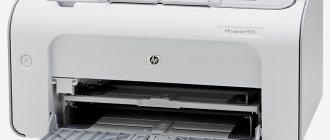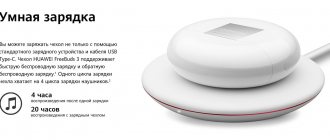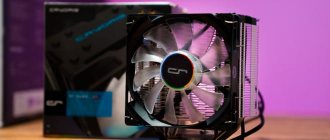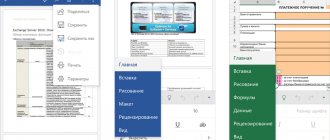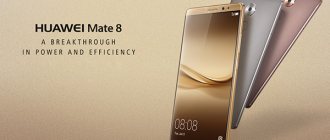Hard drive manufacturers are constantly working to modernize their products and launch new models of their products onto the market. Getting confused in this wealth is not just easy, but extremely easy. To prevent this from happening, read our material: in it we will tell you how to choose an HDD and which hard drives deserve the title of the best.
- Types of hard drives
- How to choose a hard drive for a laptop
- Rating of the best hard drives
- FAQ
Types of hard drives
Hard drive is a fairly generic name for drives that are not similar either in appearance or in operating principle. This is the customary name for any device that increases the memory of equipment, be it a built-in flash drive, hard drive or external drive. There are three types of such devices: HDD, SSD and their hybrid SSHD.
HDD
HDDs operate on the principle of a mechanical device based on metal magnetized plates. They provide a large amount of data storage. Their main advantages:
- affordable price;
- capacity (give up to 2-3 terabytes of memory for the average user);
- compatible with all PCs;
- more reliable in terms of information storage;
- There are reputable manufacturers and separate high-speed series.
Disadvantages of HDDs did not allow them to become a universal solution for data storage:
- designed for the most part only for storing information due to the low read/write speed;
- do not significantly affect performance if this is the problem;
- the more plates, the less reliable the device;
- overheat;
- significantly consume electricity;
- make noise and crackle during operation (not all, but many).
The standard size for built-in devices of this type is 3.5″. A modern connector for connecting to the motherboard is SATA3. This controller replaced the previous SATA2 and SATA1. They are compatible on most PC models with modern hard drives. But, if the computer is outdated, then the HDD must be carefully checked for possible compatibility both in this parameter and in several others.
The volume of models produced on the market now ranges from a minimum of 500 GB to 16 TB (for special devices). But for ordinary users, 2 TB hard drives are enough; stationary computers that are not of the latest build will not cope with more. The most convenient and common volume is 1 TB. According to the rules, you need to take into account that the disk should contain 20% - 30% more memory than required. It is precisely this reserve that you need to focus on.
There are many manufacturers of hard drives, but models from Seagate, Hitachi and WD (Western Digital) are considered the most reliable and fast. Each company has successful series that are tested by users and have proven themselves to be reliable, trouble-free operation. And even these trusted brands have obviously failed models that quickly died along with the information on them.
SSD
SSD drives are solid-state and operate on the principle of a flash drive based on memory chips. Everything is recorded on microcircuits. They did not appear exactly as a competitor to HDDs for data storage. SSDs solve another problem - they add performance. Their advantages:
- very fast;
- increase the power of a PC or laptop and the response of heavy programs and games;
- do not make noise and do not heat up;
- smaller size.
There are also disadvantages:
- at least 5-7 times more expensive than HDD;
- do not last forever, more often HDDs fail;
- afraid of static and power surges;
- smaller in volume than hard drives.
Their standard form factor is 2.5″. Suitable for laptops or modern PCs, where it is indicated that there is a 2.5″ compartment. You can also install it in a regular computer using an adapter, which is often included. They are also connected to the motherboard using a SATA controller. Modern models are produced with a SATA3 interface. The available memory capacity of SSDs ranges from 120 GB to 1 TB.
SSD manufacturers that have earned trust are basically the same: WD, Seagate, Samsung, Intel, SanDisk. There are good series from Crucial, Plextor, A-DATA, HyperX, GoodRAM, Corsair. The memory capacity of a solid-state SSD device should be 30-40% greater than the volume required for the operating system, basic heavy programs and powerful games.
SSHD
Hybrids are practically the same HDD hard drive, but with a small flash drive in the form of an SSD for caching. In principle, such devices take the best from both types of drives. The speed is much higher compared to a disk on platters, there is a lot of memory, and the price is affordable.
From its HDD component, SSHD took the disadvantage of a mechanical device - heating of the plates, possible noise and crackling. There are few producers of hybrids. The majority of discs on sale are from the developer of this technology, Seagate.
Selection criteria
If the task is not to choose a hard drive for special conditions (for a server, professional studio, etc.), then ordinary users need to pay attention to several parameters:
- Memory;
- reading speed;
- recording speed;
- buffer memory volume.
Memory
The larger the amount of memory, the greater the performance, all other things being equal, but it will also cost more. For HDD and hybrid SSHD, a size of 1 TB for a personal or office PC with normal use (text editor, Internet) will be optimal. The same purpose for an SSD will require approximately 120-200 GB of memory.
The more powerful the operating system, software, games, the larger the archives with photos, videos, and torrent downloads weigh, the more memory the disk needs. For hard drives and hybrids it should start from 2 TB (be sure to check for compatibility with the computer hardware, because outdated models will not open the entire volume), and for SSD - from 256 GB.
For special-purpose equipment (server PCs, etc.), whose performance is many times higher than that of consumer computers and laptops, the amount of memory is selected by professionals. This also includes gaming computers - such systems should be assembled based on the experience of those who understand the topic.
Reading speed
The performance of drives is determined by their speed of reading and writing information. The higher this speed, the more comfortable it is to work on a PC or laptop. For HDDs used for storage, this parameter affects recording and loading files; for SSDs, it affects the response time of programs and folders, cards, and actions in games.
Typical read/write speed for HDD devices: 120-150 MB/s. This is quite enough for a home PC and laptop. For server devices, this parameter is in the range of 500 - 1000 Mb/s and higher. For SSD drives, the minimum read/write speed is 400 - 500 MB/s. For equipment that requires high performance, the parameter starts at 560 Mb/s.
The problem is that manufacturers do not indicate these numbers in the general characteristics of the disk. You can check your hard drive for reading speed using HD Tune Pro and similar programs. The test graph will display not only the real performance parameters of the device, but also its character: the more uniform the graph, without strong dips, etc., the more stable and reliable the disk should be.
It’s easier to choose a device based on this parameter based on reviews on the Internet. Buyers willingly share such reading speed test graphs in reviews and reviews of their drive models. Just google the name of the device and series with the word “test”, “testing”, “speed test” or “review”.
Rotational speed
Spindle rotation speed - this characteristic is only needed to select HDD or SSHD, i.e. mechanical device. SSDs have a different operating principle; they do not have this parameter. Rotation speed is measured in revolutions per minute (RPM), and it affects the response of the drive, its responsiveness when searching for information and ease of use in the system.
There are three main RPM indicators:
- 5400 - 5900 rpm;
- 7200 rpm;
- 10000 - 15000 rpm.
The most energy efficient, greenest and quietest drive will be 5400 rpm. It is enough for a regular user PC and laptop. But for new powerful equipment, it is better to immediately take a hard drive with 7200 rpm. It will handle powerful programs, modern games, and a large archive with heavy videos. But revolutions of 10,000 or more are needed for server and professional special equipment.
Buffer memory capacity
Little attention is paid to this characteristic when choosing. But in vain, because a disk with a large amount of buffer memory will be faster and more powerful in operation. The larger the cache, the more typical commands the device will throw there and the less time it will spend reprocessing them. Nowadays there are disks with 5 cache parameters on sale:
- 16 MB;
- 32 MB;
- 64 MB;
- 128 MB;
- 256 MB.
All other things being equal, it is better to take the one with the larger buffer memory capacity.
Nuances
Unfortunately, you can’t just buy the first drive you come across with good parameters. There are nuances that buyers are not aware of. Compatibility with technology is very important.
Interfaces
Previously, computers were equipped with an IDE connector. And modern drives use the SATA interface. It will be impossible to connect a new drive to an old PC without an adapter, which still needs to be found.
The operation of the SATA slot just seems the same. The SATA generation differs from SATA2 and SATA3 in data transfer speed. If a hard drive or SSD is connected to an outdated interface, then the speed of the device will be limited, and will not be the maximum for it.
The USB 2.0, 3.0 and PCI-E interface for a remote drive directly affects the data transfer speed and, accordingly, the system performance. USB 3.0 for a drive with a connector for it will work faster than 2.0. A special PCI Express slot is a kind of information transfer amplifier. By connecting it, you can increase the speed of data access by almost 7 times.
Memory
The same goes for memory capacity. If the OS has an old BIOS, then drives over 2 TB will simply lose their capacity. For example, when running a 3 TB device, less than 2 TB will be displayed. In order for such a modern disk to work correctly and the entire amount of memory to be available, check through the Boot line whether there are UEFI letters. If the motherboard supports this mode, then you can afford a drive of at least 3 TB, at least 4 TB.
The actual amount of memory also has its own nuances. Due to the fact that manufacturers count not 1024 units in MB, GB and TB, but only 1000, the operating system sees the drive capacity as less than declared. For example, owners of 1 TB hard drives find that the computer sees only 931 GB of memory.
Availability of NCQ function
The speed of the disk can be affected by the additional NCQ function, which is often included in the latest models. This mode remembers the most common commands and shows the system the fastest path for subsequent similar requests. In fact, the drive spends less time responding. If the device has this function, then it is better to choose this model.
Number of platters for HDD
Modern hard drives, due to their memory capacity, come with a larger number of recording plates than before. This has a worse effect on the speed of the hard drive and makes it less reliable, because... the plates overheat even more. In operation, such disks perform worse. You can check the number of these plates only by reviews and by estimating the size (the thicker, the more inside the plates), because companies rarely indicate this information in the characteristics. If the manufacturer hides the number of plates and recording heads, then there is nothing to brag about.
Disc markings from the WD manufacturer
Some manufacturers are trying to create their own disc labeling system. For example, some of the most popular and sought-after drives of all types from the Western Digital (WD) brand have different label colors.
| Color | Disc series and characteristics |
| blue | Cover Blue: medium reliability, for ordinary tasks, budget |
| green | Cover Green: inexpensive, low power, low noise, does not heat up, for storing standard data |
| black | Cover Black: very reliable, high quality, maximum performance, expensive |
| red | Cover Red: increased reliability for storing important data, very expensive |
It’s easy to navigate through such a system, choosing the drive that is optimal in quality and functionality. To back up important personal information, games or powerful professional programs (photos, videos), it is better to invest in disks from the black and red series. For normal work, the blue series is enough, but the green series will have a little less noise and electricity consumption, but will be very slow.
Defragmenting the hard drive
When working on a computer, we periodically have to delete, move, and overwrite various elements. As a result, fragmented files remain on the hard drive. The fact is that the hard drive does not rewrite the information on its own, but uses free space for part of the document and then writes the rest.
Everything leads to the fact that the magnetic head of the device subsequently has to work a couple of times more intensely in order to read the necessary information. And this leads to the rapid failure of the hard drive. How to avoid? By timely defragmentation of disk space.
There is no need to “be clever” for this - the popular Windows OS already contains the corresponding utility. Using the program is easy:
- Go to “My Computer” and find the required local (internal hard) drive.
- Click on its name with the right mouse button.
- Go to the "Properties" section.
- Click on the “Service” tab.
- Now just click on “Run defragmentation”. That's all. Try to repeat this procedure periodically.
If for some reason the standard program is not suitable for you, then you can pay attention to similar products from third-party developers: Defraggler, Smart Defrag, O&O Defrag, Auslogics Disk Defrag, etc.
The best 1TB hard drives
Seagate ST1000DM010
A reliable hard drive from a trusted manufacturer for standard home and office systems. Low. The drive is quite fast due to the spindle speed of 7200 rpm and a sufficient cache volume of 64 MB. The price you pay for speed is vibration, if not loud noise. Compared to its competitors, the hard drive is quiet and cool. But these parameters, as well as the testing schedule, could be better. I'm glad it was assembled in Thailand and not in China.
Disadvantages: despite the stated power control mechanism, which should reduce the heating of the device, the drive heats up to an average of 35 - 45 ºC, for some the read/write speed drops significantly, unreliable packaging.
Western Digital WD Blue 1 TB (WD10EZEX)
Fast and a little noisy. Good spindle speed parameters of 7200 rpm and 64 MB of buffer memory. Budget series, but the disk is one of the best in terms of performance. Some properties are no worse than Black series discs. Quite reliable, it works for many for years. And the 2-year warranty speaks for itself (not 3 years, but not 12 months either). But the testing schedule is better when the propeller is new; when it gets clogged, the speeds drop. Cold. Rarely does anyone complain that it heats up above 35 degrees, which is the norm.
Cons: A little noisy, there is often vibration, because... assembled from cheap materials. Poorly packaged - just a bag.
Toshiba HDWD110UZSVA
A good workhorse for a user's PC: it works quickly thanks to a spindle speed of 7200 rpm and a 64 MB cache. The read/write speed in tests is one of the best. Moderately noisy, supposedly only 26 dB. Some owners complain of a crackling sound, but there is no vibration. Cold, practically does not heat up. Continues to maintain high performance even when scored more than halfway.
Cons: assembled in China, noisy, there are strange crackling and wheezing noises, poorly packaged, in another series it comes in a box.
HGST Hitachi Travelstar Z5K1 1TB
The Winchester is quite new, there is little objective data on reliability. Assembly in Malaysia at WD brand factories. But the manufacturer’s 3-year warranty convinces of the durability of the model. Very quiet, cold, almost no one complains about overheating. Compact size captivates: 2.5-inch form factor. It can be used on both a PC and a laptop, which is very convenient. The spindle speed is 5400 rpm, but the cache is as much as 128 MB! The disc is fast, but it has a huge problem - the tiled recording mode. This makes working with files very slow.
Cons: slow file recording, general system slowdown due to tiled SMR recording, package packaging.
Purchase in store
The shelf life of a hard drive largely depends on the hard drive model you choose. Therefore, when purchasing a component in a salon, it is important to pay attention to the following characteristics of the device:
- Shop. Read reviews on independent portals about this outlet. A large number of negative ones is a significant reason to turn to another seller, even if this market offers favorable conditions. It is also desirable that the store is not universal, but specializes in computers and components.
- Weight. Yes, such an unexpected characteristic. As practice shows, low-quality hard drives are usually suspiciously light. Perhaps the cunning manufacturer saved on installing the necessary components. There are even frequent cases when the device was not even equipped with a cooling system! We advise you to take two discs of different price categories and manufacturers in your hands and thus determine their severity.
- Guarantee. Surprisingly, sometimes the manufacturer sets a short warranty period for high-quality hard drives. On average it is 6 months, less often - 12. What is the reason for this? The hard drive is one of the most unreliable components of a PC. It's all about the elements of the power supply: they quickly overheat, which is why they fail. And this immediately causes interference in the operation of the hard drive and contributes to its breakdown. In most cases, an increased warranty period is just an advertising gimmick to quickly sell out stale goods. Consider whether you need it: wait until a component is replaced under warranty, without which it is impossible to use the computer.
The best hard drives from 2 TB
Western Digital WD Blue Desktop 4 TB (WD40EZRZ)
The 4 TB monster of the blue series is quite reliable. Assembly in Thailand distinguishes higher quality wheels. The hard drive has only 5400 rpm and 64 MB of cache, but the read and write speeds are as advertised in testing. The main advantage is that it is very quiet. As quiet as possible, which surprises buyers.
Cons: not enough power compared to competitors, very little buffer memory for 4 TB, poorly packaged, which can lead to breakage.
Seagate ST4000DM004
The powerful “Barracuda” from a well-known brand does not disappoint in quality. In terms of reliability, it is quite suitable storage. Compared to similar models, this is an inexpensive hard drive. Huge 256 MB cache at a spindle speed of 5400 rpm. Only 2 plates. Very energy efficient, consumes virtually no energy. Cool and low-noise disk, inaudible in the system. The drive has a tiled SMR recording system, which should be compensated by a sufficient cache, but still reduces read speed.
Cons: the tiled recording system slows down the drive's power, takes a long time to record, there is a limit on the number of overwrites per year, it comes in a package.
Toshiba HDWD130UZSVA
A simple, reliable drive. Quite fast parameters are declared: 7200 rpm, NCQ function, but the 64 MB cache is too small. Read/write speed in tests is close to maximum. 3 plates, but the heating temperature is normal up to 38 degrees. Consider that it does not heat up, is cold and makes little noise. Not completely quiet, of course, but if you get a good propeller, then there is no vibration. Cheap, the most inexpensive option among similar 3 TB drives. It is used for home systems as regular file storage. Comes in factory packaging in a box.
Cons: long response time after waking up, freezes, some people experience vibration.
Samsung HD204UI
The declared parameters of 5400 rpm spindle head speed and only 32 MB of cache set one up to expect low speeds, but either due to the NCQ function or successful mechanics, the disk pleases with speeds. Quiet, working in a closed case is almost inaudible. The main advantage of the model is minimal heating. Hard compared to analogues of other brands is simply icy. Operates in a temperature range of 25 - 32 degrees. Inexpensive.
Cons: not the highest speed, this series is not as reliable as the previous ones, it is also packaged in a regular package.
The best hybrid HDD+SSD hard drive
Seagate ST1000DX002
A drive with 1 TB of memory from the HDD and 8 GB of cache from the SSD. The parameters are fast: 7200 rpm, 64 MB of buffer memory, high declared read and response speeds. Suitable for running OS, gaming computer and working with multimedia professional programs. Very quiet, low noise as expected, which is very pleasing. Cold disk, practically does not heat up. It really made the PC fly for many owners, but not everyone noticed an increase in the OS launch speed from the hybrid. The 60 month warranty and assembly in Thailand are reassuring.
Disadvantages: does not live up to expectations in terms of speed and reliability, they often lose their “health” in the first year of operation, perhaps because the packaging is an unprotected package.
power unit
The service life of a hard drive in hours is, of course, quite difficult to determine. Even in years, this value can only be approximated.
Experts have long noticed: the operating speed and lifespan of an internal hard drive directly depend on the quality of the energy supplied to it. Accordingly, your computer must have a reputable power supply installed.
Of course, many of us want to save money, especially since you can find more budget power supplies on the market. But, as they say, the miser pays twice. It has already been established that cheap power supplies fail after about a year of operation. According to experienced users, power supplies of the NONAME type are considered the lowest quality. Remember that not only the operation of the hard drive, but also all other components of the system will depend on the power supply.
The best laptop hard drives
Western Digital WD Black 500 GB (WD5000LPLX)
A very fast (7200 rpm and 32 MB cache) and reliable drive of a decent quality black series pleases with both the noise level (for most owners it is quiet) and normal temperature (the drive is cold). The guarantee of up to 5 years is reassuring that the hard drive will last this period. The read/write speed is as advertised. Works great not only as an internal drive, but also as an external drive via USB 2.0 and 3.0.
Cons: there are noisy disks, 500 GB is not enough.
Seagate ST500LM021
Affordable laptop hard drive. The high spindle head rotation speed of 7200 rpm and 32 MB of buffer memory out of 500 GB allow you to quickly work with files. According to tests, the read/write speed is really high and corresponds to the declared one. Low noise, although you can't call it quiet. Temperatures are within normal limits, but the disk is not cold. 2 year warranty.
Cons: Assembly in China, which is probably why drive failures are frequent. It slows down, definitely not for gaming. 500 GB is not enough. It gets very hot compared to analogues and is noisy. Comes in a bag.
Using a UPS
How to increase the lifespan of your hard drive? Experienced users recommend using a UPS - an uninterruptible power supply. It helps the functioning of not only the hard drive and power supply, but also all components of the system as a whole.
Many users are confident in the wiring of their apartment and believe that they are insured against surges. But, as practice shows, in no case can you completely get rid of power surges.
The cost of a UPS is relatively low - about 2000 rubles. However, such spending will help you save important data on your hard drive and save other PC components from overheating.
The best hard drives for a server
Western Digital WD Red 4 TB (WD40EFRX)
A decent hard drive for a powerful home system. 4 TB comes with 64 MB of cache and the NCQ function. Fast. The device has 4 plates, but the disk does not heat up. The operating temperature is about 32-40 degrees, the parameters state the maximum permissible heating is up to 70 ºC. Even in a combination of 2-4 disks, overheating does not occur. Reviews vary in terms of noise, but more often they indicate low noise, and the spindle speed of 5400 rpm should not produce much noise. The heads are not parked, which increases the resource. The drive is reliable. 3 year warranty and assembled in Thailand.
Cons: poorly packaged in a regular package, expensive, noisy for some.
Seagate ST4000VN008 4Tb
Cheaper than its competitor, fast. Thanks to the increased spindle speed of 5900 rpm versus the usual 5400 rpm, the reading speed is high. A cache of 64 MB is enough. The most budget option for NAS. The disc is double balanced, so it is very low noise. All owners note its silence in comparison with analogues. Cold, 3 plates help maintain minimum heating temperature. 3 year warranty.
Cons: packaging is a bag, you may get a defective copy, but in general the discs are reliable.
HGST Hitachi HUS722T2TALA604
High-speed due to 7200 rpm and 128 MB cache with 2 TB hard drive capacity. It slows down a bit at startup, but then works quickly. High reading speed is what the manufacturer designed this model for. I didn’t have to pay for the speed with overheating, the drive is cold. There are still few statistics to assess reliability. But the 5-year warranty makes you believe in the durability of this series of hard drives.
Cons: noisy, lots of crunching, some problem areas when testing.
The best hard drives for video surveillance systems
Seagate ST4000VX007
A special line of hard drives for video surveillance systems lives up to the parameters declared by the company. High-speed disk: 5900 rpm, 64 MB buffer from 4 TB of memory. The read/write speed is high, and in comparison with analogues it does not sags so much towards the end. Doesn't get particularly hot, cold. There are different reviews regarding noise, but more often the owners are impressed by low noise. Supports up to 64 cameras, high performance and affordable. 3 year warranty and assembled in Thailand.
Cons: a little noisy for some, comes in a bag.
Western Digital WD Purple 4 TB (WD40PURZ)
A reliable series specially designed for video surveillance to withstand 24/7 operation and skip errors for uninterrupted operation. Despite the minimum speed of 5400 rpm, it works consistently fast. Not the coldest, but not overheating. Quiet. The quietest of the competitors. The heads do not park. The usual parameters: 4 TB, 64 MB cache, support for 64 cameras. 3 year warranty. Assembly Thailand. A fairly reliable drive.
Cons: gets hot, comes in a simple package.
Toshiba S300 HDWT140UZSVA 4 Tb
A fairly recent line with capacities of 4, 5 and 10 TB is specially designed for video surveillance systems. Reliable, but not the fastest drive: 5400 rpm, with average read speed. Supports stable operation of 64 cameras. A 128 MB buffer from 4 TB helps Toshiba's Dynamic Cache Technology achieve uninterrupted frame recording. Quiet, there is a special balancing, so it does not make noise or chirp. It doesn't overheat, but it can't be called cold either. Assembled in the Philippines and comes with a 3 year warranty.
Cons: average speed, poor packaging.
You need to know this
- HDD drives must not be dropped. If this is an external drive, then it is better to immediately buy a protective case.
- SSDs are afraid of static electricity discharge. You need to wear protective gloves when working with the device. It is advisable not to touch it at all after installation.
- Technologies are developing too quickly, so the amount of memory that seemed excessive will turn out to be insufficient in a couple of years. Take the maximum disc that your equipment can handle.
- It is worth buying a model that has been on the market for at least six months. This way you can collect user reviews so as not to buy a pig in a poke.
The storage capacity of the drive is smaller than stated due to the cunning of the manufacturers. They calculate the multiplicity of MB and GB not in binary, but in the decimal system. Not 1024 MB in 1 GB, but only 1000 MB in 1 GB. Operating systems still count. Therefore, 500 GB of disk memory during installation will “lose weight” to 465 GB!
You can't just buy the most powerful and modern hard drive or solid state drive. You need to check the device for compatibility with your equipment, carefully examining the disk parameters, interface compatibility and other nuances.
For example, if you connect a hard drive via a SATA2 slot, the data transfer speed will be limited by the speed of this connector to 3 Gbps. And with SATA3 this speed increases to 6 Gbit/s. The latest generation PCI-E interface increases data transfer speeds by 7 times.
conclusions
Our rating has come to a close. We have collected the best HDDs for solving various tasks, for games, for a console, for organizing network storage, and even for a laptop. Now you can decide which is the best hard drive to buy for your computer. What hard drive did you choose? Write in the comments!
If you find an error, please select a piece of text and press Ctrl+Enter.
Related posts:
No related photos.
Rate this article:
( 6 ratings, average: 4.17 out of 5)
Tweet Pin It
about the author
Author:
Mark Knapp
Original:
https://www.techradar.com/news/10-best-internal-desktop-and-laptop-hard-disk-drives-2016
Translator:
av_gusev
